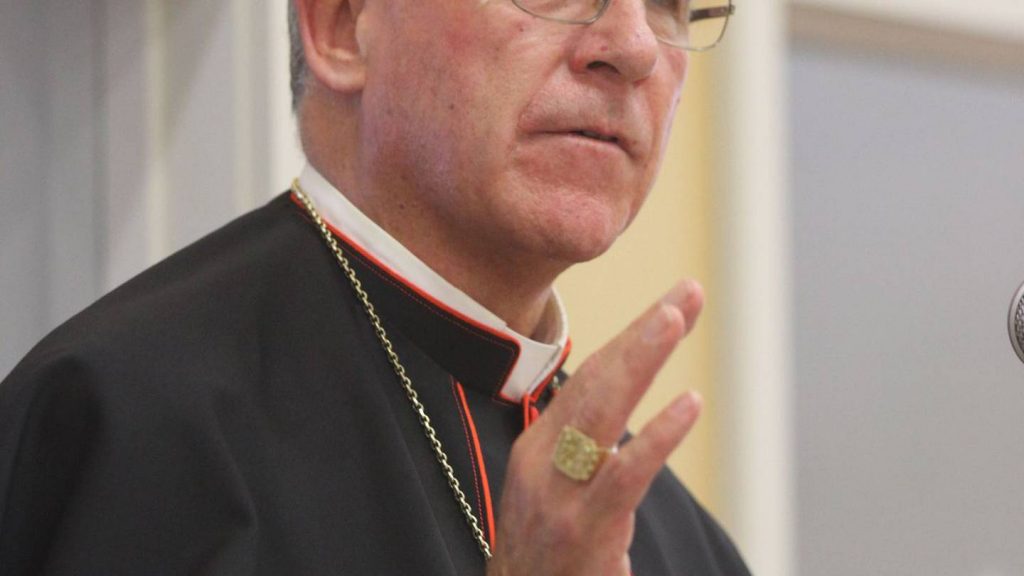Survivors of abuse in care celebrate ‘validating’ name change
For the men who survived “evil” sexual and physical abuse in a Catholic boys’ home in Christchurch, last week was the first time authority figures gave them a reason to…
The sexual harm helpline can be accessed free, 24 hours a day, 7 days a week by phone, text, website, online chat and email.
As many as one in seven Catholic diocesan clergy in New Zealand have been accused of abuse, according to an investigation by the church.

But groups representing victims say that is likely to be a fraction of the actual abuse within the church, which often went unreported or unrecorded.
The Catholic Church reported on the scale of alleged abuse within its New Zealand parishes, schools and other institutions for the first time today, after a request by the Royal Commission on Abuse in State Care.
During a two-year inquiry, the church received 1680 reports by 1122 individuals against Catholic clergy, brothers, nuns, sisters and lay people from 1950 to the present day – of which 592 were named.
Nearly half of the alleged abuse involved sexual harm. And the vast majority of the complaints involved children.
“These statistics on abuse in the Catholic Church going back to 1950 are horrifying and something we are deeply ashamed of,” said Cardinal John Dew, the most senior representative of the church in New Zealand.
“I am grateful that so much work has been done in researching the details and making them public.
“As we continue to respond to the Royal Commission into Abuse and we build a safer Church for everyone, I firmly hope that facts like these will help us to face the sad reality.
“The Church will learn from this and affirm its commitment to the work of safeguarding.”
The inquiry was led by Te Rōpū Tautoko, a group that coordinates the Catholic Church’s engagement with the Royal Commission.
Te Rōpū Tautoko acknowledged that it was not an exhaustive record of abuse, because it only covered recorded reports.
It found that allegations of abuse had been made about 182, or 14 per cent, of the 1274 Catholic diocesan clergy who had worked in New Zealand since 1950. Multiple allegations of abuse were made about many.
Network for Survivors of Abuse in Faith-Based Institutions spokesman Murray Heasley said the church’s findings likely reflected a “tiny fraction” of overall abuse within the church.
“The majority of survivors did not go back to report their abuse within the institution. Nor did the institutions keep records.”
The higher rate of alleged abuse among clergy was probably the result of a major police investigation into Marylands School in Christchurch in the early 2000s, he said.
Heasley said that if further, well-resourced police investigations were carried out into other Catholic institutions, the scale of abuse across all parts of the church would be higher.
He also said the church did not appear to be showing any urgency in response to the damning findings.
“The church has come up with these stats, where’s the action?
“We have to be reminded that we are talking about real human beings here. Behind these cold figures is horrific abuse and pain, of survivors that are living now, and carrying trauma from day to day as we speak.”
Of the 2286 brothers and priests belonging to the church, 187 (8 per cent) had reports of abuse against them. And 3 per cent of the 4247 female congregational members were accused of abuse. Another 138 allegations were made against lay people within the church.
Half of the complaints related to sexual abuse against children. They most commonly occurred in school and residential care facilities, but also in parishes.
Victims did not always name their abusers. But in some cases, multiple allegations were made against individuals. Six alleged abusers had 15 or more complaints made against them.
“Each piece of data represents many people’s lives,” said Sister Margaret Anne Mills, president of the Congregational Leaders Conference of Aotearoa New Zealand.
“Much of it represents terrible harm committed by one person on another. We can never forget that.
“Being involved in being part of healing that harm, as much as is possible is, and needs to continue to be, our focus.
“All church leaders need to urgently understand and acknowledge our shared history; understand and acknowledge the shocking impact of abuse in church settings on victims and their families; understand what it means for survivors and our faith communities; and act today.”
Te Rōpū Tautoko chairwoman Catherine Fyfe said the extent of reports of abuse within the Catholic Church had not been collated until now.
“The Information Gathering Project was a major exercise involving dozens of people over two years, including searching paper files dating back 70 years in hundreds of places.”
The publication of the inquiry comes ahead of Royal Commission hearings on Catholic Marylands School and Hebron Trust in Christchurch. In all, 236 reports of abuse related to the two institutions, and another 239 reports relate to St Joseph’s Orphanage and Nazareth House, where brothers of Marylands and Hebron Trust were involved.
In previous commission hearings, victims accused the Catholic Church of covering up and minimising sexual abuse.
Witnesses spoke of how the church investigated itself after an allegation, usually with little separation between the investigator and the abuser.
It often minimised the abuse, in its actions and language. Survivors were not told to go to police. And abusers were rarely punished.
Survivors were usually offered money – with the caveat that it was an ex-gratia payment and not compensation for abuse.